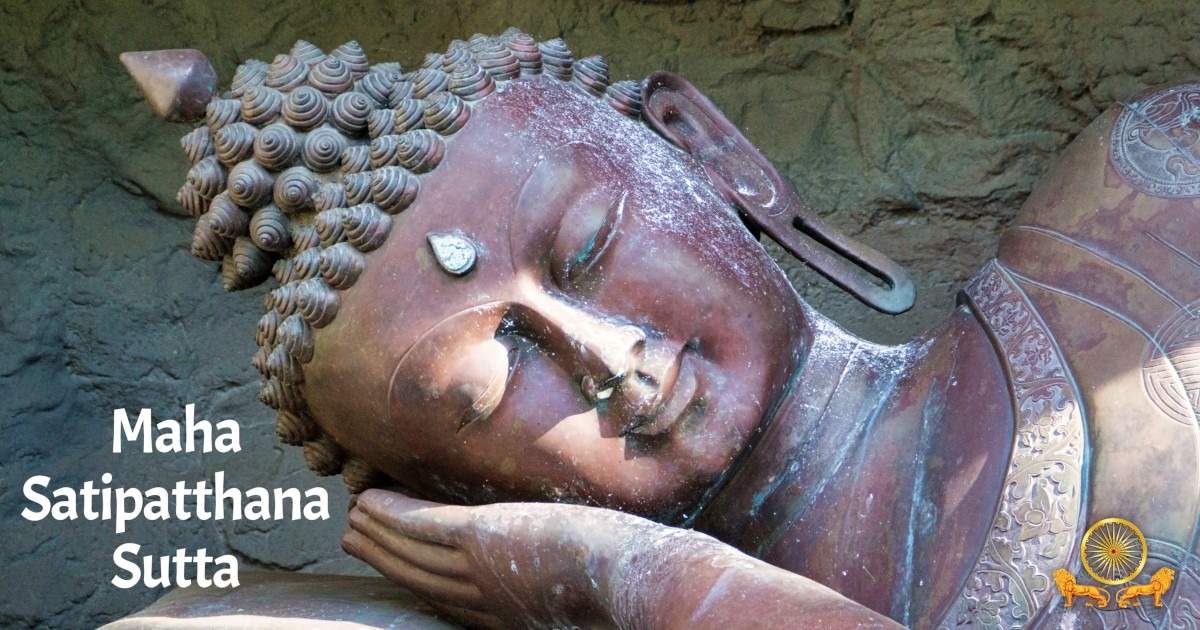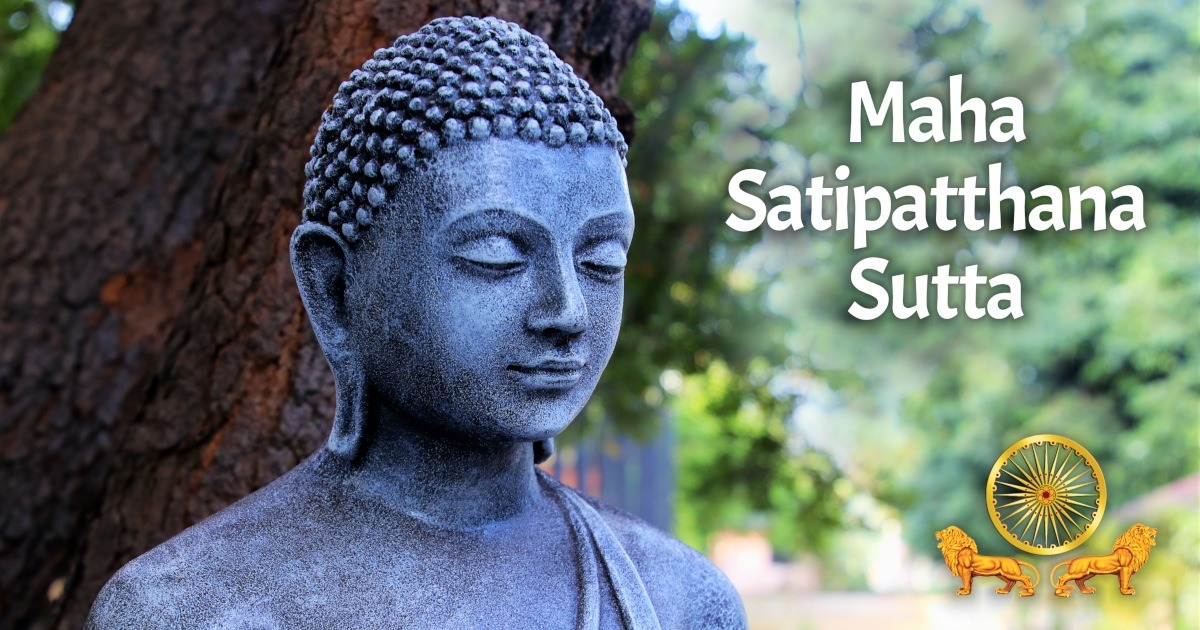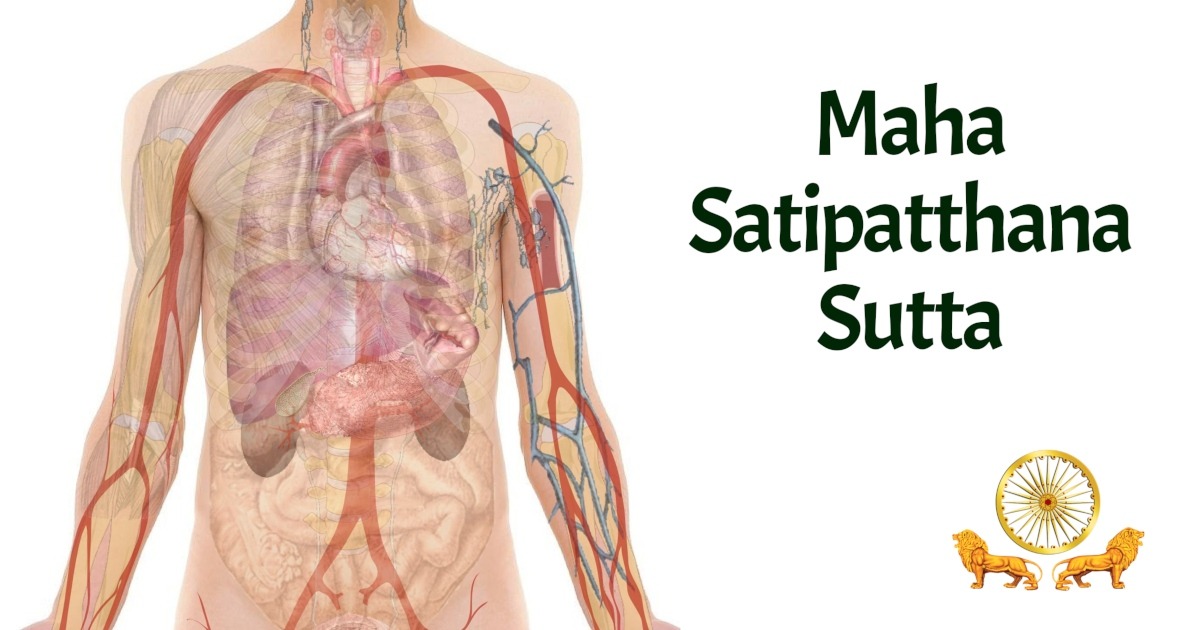4.2 Khandha Pabbaṁ: Section on the Aggregates
Puna ca paraṁ bhikkhave bhikkhu / dhammesu dhammānupassī viharati / pañcasu upādānakkhandhesu./ Kathañca bhikkhave bhikkhu / dhammesu dhammānupassī viharati,/ pañcasu upādānakkhandhesu?/
“Again monks, a monk dwells contemplating phenomena in phenomena • in terms of the five aggregates of clinging. And how monks, does a monk dwell contemplating phenomena in phenomena • in terms of the five aggregates of clinging?
Idha bhikkhave bhikkhu,/ ‘iti rūpaṁ, iti rūpassa samudayo,/ iti rūpassa atthaṅgamo./
“Here monks, a monk understands: • ‘Such is material form, such its origin, and such its passing away.
Iti vedanā, iti vedanāya samudayo,/ iti vedanāya atthaṅgamo./
Such is feeling, such its origin, and such its passing away.
Iti saññā, iti saññāya samudayo,/ iti saññāya atthaṅgamo./
Such is perception, such its origin, and such its passing away.
Iti saṅkhārā, iti saṅkhārānaṁ samudayo,/ iti saṅkhārānaṁ atthaṅgamo./
Such are volitional formations, such their origin, and such their passing away.
Iti viññāṇaṁ, iti viññāṇassa samudayo,/ iti viññāṇassa atthaṅgamo’ti./
Such is consciousness, such its origin, and such its passing away.’
Iti ajjhattaṁ vā dhammesu dhammānupassī viharati./ Bahiddhā vā dhammesu dhammānupassī viharati./ Ajjhatta bahiddhā vā dhammesu dhammānupassī viharati./
“In this way he dwells contemplating phenomena in phenomena within himself, • he dwells contemplating phenomena in phenomena within another, • and he dwells contemplating phenomena in phenomena • both within himself and within another.
Samudaya dhammānupassī vā dhammesu viharati,/ vaya dhammānupassī vā dhammesu viharati,/ samudaya vaya dhammānupassī vā dhammesu viharati./
“He dwells contemplating the arising of the phenomena, • he dwells contemplating the passing away of the phenomena, • and he dwells contemplating the arising and passing away of the phenomena.
Atthi dhammā’ti vā panassa sati paccupaṭṭhitā hoti./ Yāvadeva ñāṇa mattāya, patissati mattāya,/ anissito ca viharati./ Na ca kiñci loke upādiyati./
“Mindfulness, that there are phenomena • is simply established in him • to the extent necessary for higher knowledge and mindfulness. He dwells independent, and not clinging to anything in the world.
Evampi kho bhikkhave bhikkhu / dhammesu dhammānupassī viharati / pañcasu upādānakkhandhesu./
That is how monks, a monk dwells contemplating the phenomena in phenomena • in terms of the five aggregates of clinging.
- Uddeso: Introduction
- 1. Kāyānupassanā: The Observation of Body
- 1.1 Ānāpāna Pabbaṁ: Section on Breathing
- 1.2. Iriyāpatha Pabbaṁ: Section on Postures
- 1.3 Sampajañña Pabbaṁ: Section on Clear Comprehension
- 1.4 Paṭikūlamanasikāra Pabbaṁ: Section on Repulsiveness
- 1.5 Dhātumanasikāra Pabbaṁ: Reflections on the Elements
- 1.6 Navasīvathika Pabbaṁ: Nine Charnel-Ground Contemplations
- 2. Vedanānupassanā: Contemplation of Feeling
- 3. Cittānupassanā: Contemplation of Mind
- 4. Dhammānupassanā: Contemplation of Phenomena
- 4.1 Nīvaraṇa Pabbaṁ: Section on the Hindrances
- 4.2 Khandha Pabbaṁ: Section on the Aggregates
- 4.3 Āyatana Pabbaṁ: Section on the Sense Bases
- 4.4 Bojjhanga Pabbaṁ: Section on the Factors of Enlightenment
- 4.5 Sacca Pabbaṁ: Section on the Four Noble Truths
- Satipaṭṭhāna Bhāvanānisaṁso: The Results of the Establishing of Mindfulness

Learn how to purchase on the main book page.




















Leave A Comment